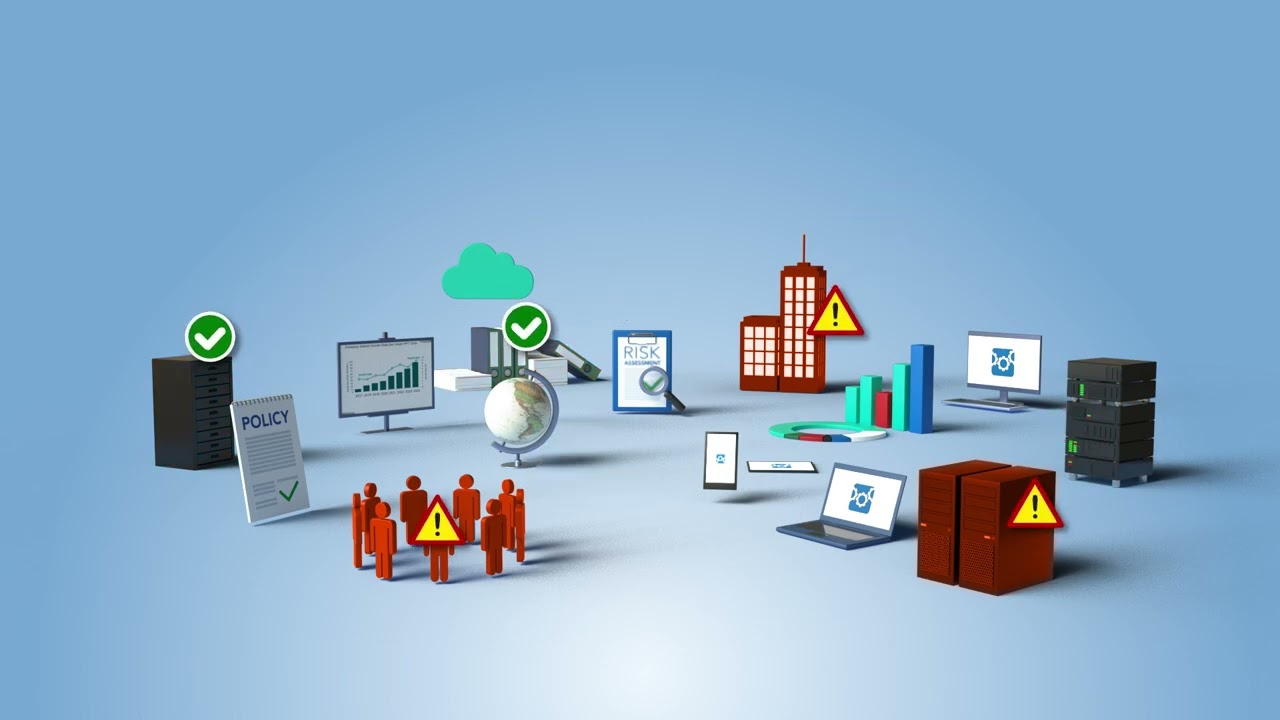Comprehensive Integrated Risk Management Solutions are available for all the world’s standards!
Table of Contents
ToggleOur risk assessment modules all participate in auto-mapping to the global compliance frameworks, saving you time and trouble. Even better, our real-time scoring, reporting, and dashboards help you stay current and compliant.
Build your own risk module easily, or use our preconfigured inventory covering:

IT Cybersecurity Risk Identification, Assessment, Analysis, and Mitigation
Continuum GRC IT and Cyber Risk Management software empowers organizations to adopt a focused, business-driven approach to managing and mitigating IT and cyber risks. Organizations conduct IT risk assessments, implement controls, and take necessary mitigation actions. Advanced cyber risk quantification capabilities help quantify cyber risks. Sophisticated analytics and reports transform raw risk data into actionable IT risk intelligence, providing clear visibility into the top cyber risks affecting the organization.
Please visit the IT & Cybersecurity Risk Management page for more information.
Powerful IT & Cyber Risk Management
The threats to data are ongoing and increasing. The consequences can be devastating: financial, legal, and reputational. Having a robust risk management program in place, with business processes that protect information at every stage, builds trust with clients and stakeholders.
Assessing your risk strategies and creating a security program may seem overwhelming. Continuum GRC is a leader in IT and cyber risk management. We work with firms nationally and internationally, assessing risks, then developing a cohesive risk management plan that works for them. We also assist in any required compliance program to mitigate risks and maintain good industry standing and trust among stakeholders.
FAQ
Key components of a cybersecurity risk management program?
The first step in a cybersecurity assessment or risk analysis is to identify potential security threats within your systems, data, and infrastructure. The likelihood and potential impact is evaluated. Ways to mitigate and respond to those security incidents are created and controls are recommended and implemented.
How do you identify cybersecurity risks?
It begins with identifying the organization’s critical assets that must be protected. Those assets can be physical or virtual. The business value of each (and what would happen to them in a data breach) are assessed and prioritized. Then, you examine threats like malware, phishing, or ransomware that might impact them.
Difference between a vulnerability assessment and a penetration test?
A vulnerablity assessment works to identify potential flaws in the security system. There are done by automated tools that scan systems and networks to identify gaps that could be exploited. A penetration test is a manual process, often done by ethical hackers, that simulates a real-world attack and works to exploit any weaknesses.
How to conduct a risk assessment for my IT assets?
Start by creating a detailed list of your organization’s most critical IT assets: servers, workstations, software, data, and the like. Classify them based on how critical or sensitive they are, and how much they affect your business. Use threat modeling to identify potential threats and scans to identify weaknesses.
How does risk management help ensure business continuity?
Risk management is proactive in identifying and mitigating the potential threats that could seriously disrupt your business. By identifying problems beforehand, and putting risk mitigation efforts like security patches, new software, or systems into place, you can prevent lost time, revenue, data, and potenial legal or reputationall damage.
How often should a business conduct a cybersecurity risk assessment?
Annual assessments are a baseline to stay current with changes to the IT landscape. Businesses handling especially sensitive data (like the finance industry) should do them more frequently, like quarterly or monthly. Events, such as a merger or adding a new operating system, may demand a fresh risk assessment.
What are you waiting for?
You are just a conversation away from putting the power of Continuum GRC to work for you.
Contact us using the form below or calling us at 1-888-896-6207 for immediate assistance.
About the Standard
Effective IT and cyber risk management delivers several compliance benefits by aligning with regulatory requirements, industry standards, and best practices. Here’s a concise overview:
- Regulatory Compliance: Robust risk management ensures adherence to laws and regulations like GDPR, HIPAA, PCI DSS, and CCPA. By identifying and mitigating risks, organizations avoid fines, penalties, and legal repercussions. For example, GDPR compliance requires data protection measures, which risk management directly supports through encryption and access controls.
- Improved Data Protection: Cyber risk management prioritizes safeguarding sensitive data, aligning with compliance mandates for data privacy and security. This reduces the likelihood of data breaches, which can lead to non-compliance with regulations requiring secure data handling.
- Audit Readiness: A structured risk management program provides documentation, risk assessments, and evidence of controls, making it easier to pass audits. Frameworks like NIST, ISO 27001, or SOC 2 rely on risk management processes to demonstrate compliance.
- Reduced Financial Liability: Proactively managing risks minimizes vulnerabilities that could lead to costly breaches or downtime, ensuring compliance with financial regulations and avoiding penalties. For instance, PCI DSS compliance requires secure payment systems, which risk management supports through vulnerability assessments.
- Enhanced Governance and Accountability: IT risk management establishes clear policies, roles, and responsibilities, aligning with governance requirements in standards like COBIT. This ensures organizations can demonstrate accountability to regulators and stakeholders.
- Third-Party Risk Management: Compliance often requires vetting vendors and partners. Cyber risk management includes assessing third-party risks, ensuring supply chain compliance with regulations like NIST 800-53 or GDPR’s third-party data processing requirements.
- Reputation and Trust: Maintaining compliance through effective risk management builds customer and stakeholder confidence, as it shows a commitment to protecting data and meeting legal obligations.
- Proactive Risk Mitigation: Regular risk assessments and controls help identify compliance gaps early, allowing organizations to address issues before they escalate into violations.
By integrating IT and cyber risk management, organizations not only meet compliance requirements but also streamline processes, reduce costs associated with non-compliance, and strengthen their overall security posture.

